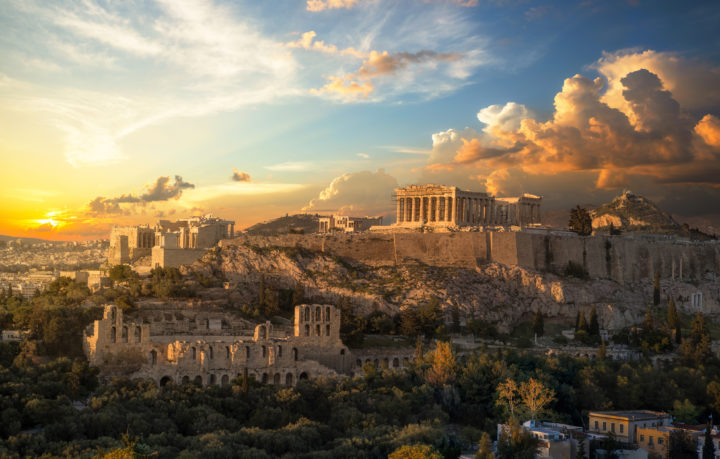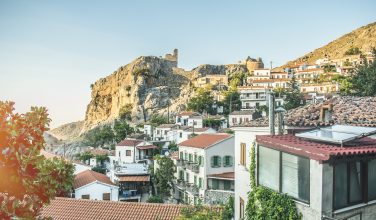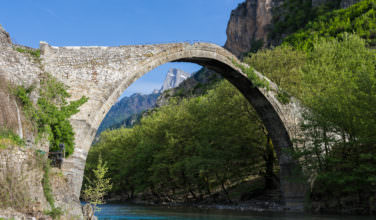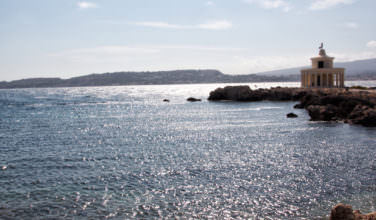The Acropolis is a Top Athens Tourist Attraction to See
Comments Off on The Acropolis is a Top Athens Tourist Attraction to See
 A trip to Athens isn’t complete without a visit to The Acropolis, which is visible from almost everywhere in the city. It is considered by some to be the most important site in the Western World.
A trip to Athens isn’t complete without a visit to The Acropolis, which is visible from almost everywhere in the city. It is considered by some to be the most important site in the Western World.
The word acropolis means “high city” in Greek, and therefore several ancient Greek cities also have their own acropolis. But due to the historical and cultural significance of the Athenian Acropolis it is widely referred to as The Acropolis.
The Acropolis itself is a flat-topped rock that rises over 500 feet high, and as such it was heavily fortified and became the place for all of Athens’ most sacred shrines and sanctuaries. Along with the Parthenon three other buildings still stand intact atop the rock: the Erectheion, the Temple of Athena Nike and the Propylaea.
Brief History of the Acropolis
The Acropolis was first inhabited in Neolithic times (4000-3000 BC) and the first temples were built during the Mycenaean era in homage to the goddess Athena. After the Battle of Salamis (400 BC), the Persians reduced all of the buildings on the Acropolis to ashes and Pericles set about an ambitious rebuilding program by transforming the Acropolis into a city of temples.
It is under Pericles’ leadership that the Parthenon, the Erectheion, the Temple of Athena Nike and the Propylaea were all built. Throughout its 2500-year history the Acropolis and its buildings have undergone several changes. The Byzantines turned the Parthenon into a church, only for the Ottoman Turks to come along and later build a mosque complete with a minaret inside of it.
The Venetians, laying siege to Ottoman Athens, fired cannon balls at the hill, and to this day you can still see the impact craters in the marble walls and columns. Unfortunately, the Turks also happened to be storing their gunpowder in Parthenon, and when a Venetian cannonball punched through the roof the resulting explosion ultimately destroyed the Parthenon. The small Temple of Athena Nike has been completely taken apart and reassembled on three different occasions.
Visit here to read more about the history of the Acropolis.
How To Get to the Acropolis
The closest metro station is the Acropolis’ own Akropoli Station on the Red Line [Line 2]. The station is located right beneath the New Acropolis Museum, where a visit must accompany any trip to the Acropolis. Foot can reach the Acropolis itself from the pedestrianized Dionysiou Areopagitou Street, which runs right in front of the main entrance to the museum. Coming from the neighborhood of Thisseio, the Acropolis entrance can be reached by following the pedestrianized and beautiful Apostolou Pavlou Street until it meets Dionysiou Areopagitou Street.
Primary Sites of the Acropolis:
Parthenon
The Parthenon epitomizes the glory of Ancient Greece. Parthenon means “virgin’s apartment” and is dedicated to Athena Parthenos, the goddess embodying the power and prestige of the city. It is the largest Doric temple every completed in Greece and the only one build completely of Pentelic marble. It took fifteen years to complete construction of this temple.
Beule Gate & Monument of Agrippa
The Beule Gate & Monument of Agrippa were named after the French archaeologist Ernest Beule who uncovered it in 1852. It is located halfway up the zig-zagging ramp leading to the Propylaia. It was once topped by the Monument of Agrippa, a bronze statue of the Roman general riding a chariot that was erected in 27 BC to commemorate victory in the Panathenaic Games.
Propylaia
The Propylaia is the monumental entrance to the Acropolis. Mnesicles built it between 437 BC and 432 BC. Its architectural brilliance matches that of the Parthenon, which it is aligned with. It is the earliest example of a building designed in relation to another.
Temple of Athena Nike
The Temple of Athena Nike stands on a platform perched atop the steep southwest edge of the Acropolis, to the right of the Proplylaia. The tiny Pentelic marble temple was designed by Kallicrates and built around 425 BC and has recently been restored. It housed a wooden statue of Athena as Victory (Nike) and the exterior friezes illustrated Athenian battle triumphs.
Statue of Thena Promachos
The Statue of Thena Promachos symbolizes Athenian invincibility against the Persians. The helmeted goddess held a shield her left hand and a spear in her right.
Erechtheion
The Erechtheion is a sanctuary built on the part of the Acropolis that is held most sacred. It is named after Erechtheus, a mythical king of Athens. It housed the cults of Athena, Poseidon, and Erechtheus. The Erechtheion is immediately recognizable by the six larger than life maiden columns that support its southern portico, called the Caryatids. The Caryatids were modeled on women from Karyai. Currently, the Caryatids seen are plaster casts. The originals are in the Acropolis Museum.
The Acropolis is and has historically been the center focal point of the city of Athens, so much so that it is synonymous with Athens. Since it is the central landmark of the city, it is one of the best vantage points to see the city of Athens in its entirety.
Categorized in: About Athens, Greece, Greek Travel Guide
This post was written by Greek Boston
Share this Greek Travel Article:





